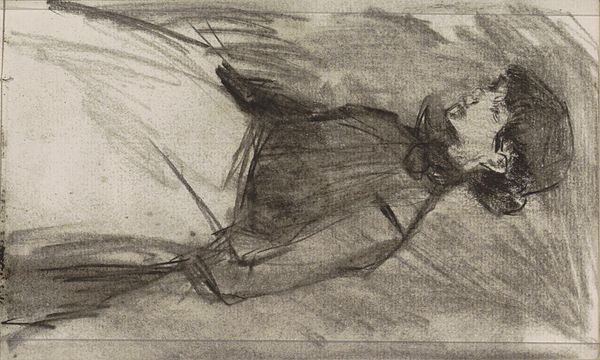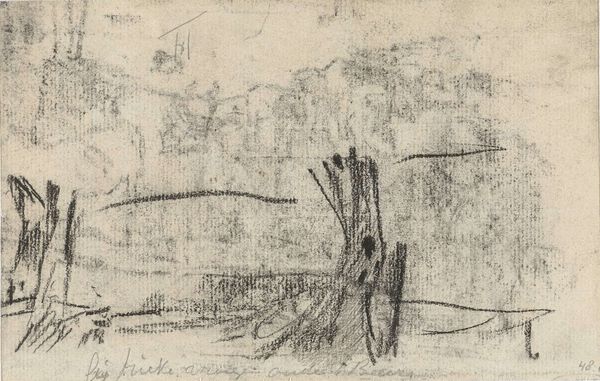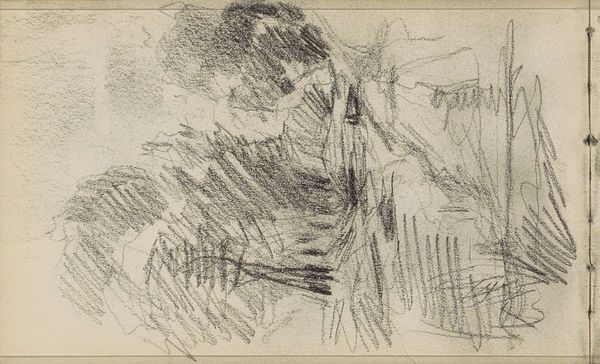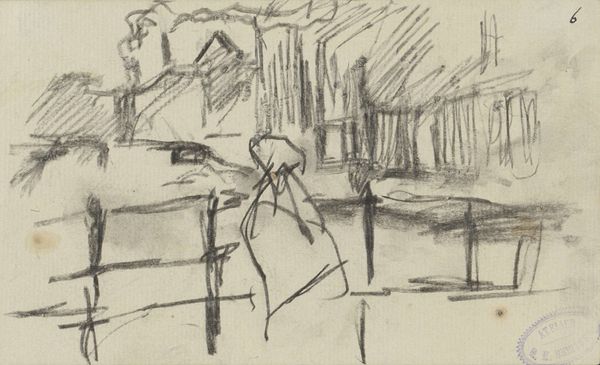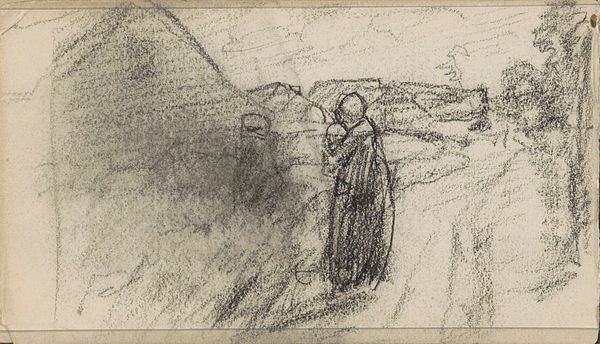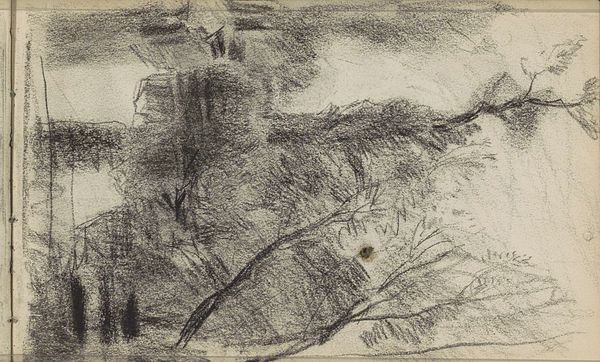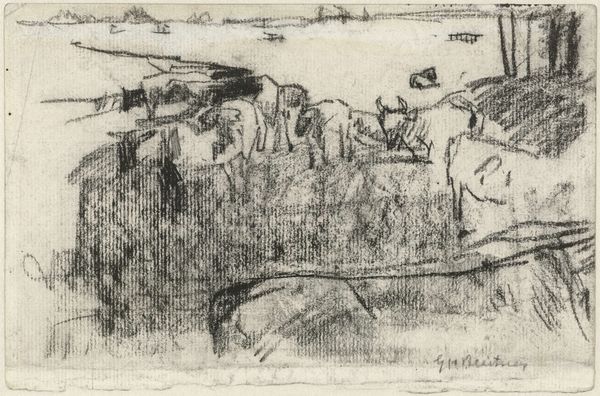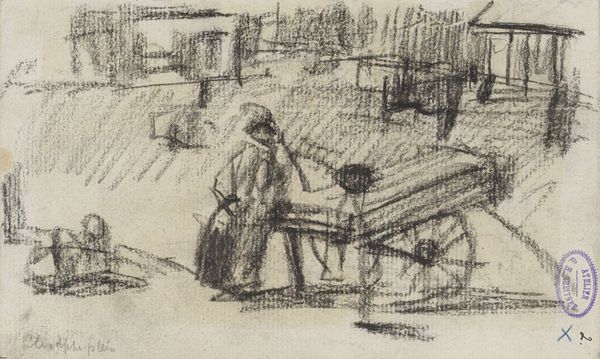
Copyright: Rijks Museum: Open Domain
Isaac Israels likely captured this woman on the street with charcoal on paper. Charcoal’s inherent qualities—its soft texture, the ease with which it smudges, and its ability to create both delicate lines and deep shadows—lend themselves perfectly to capturing fleeting moments. With a few strokes, Israels suggests the figure's form, the texture of her clothing, and the surrounding urban environment. But let’s consider the broader context. Israels, like many artists of his time, was drawn to the immediacy and accessibility of charcoal. Unlike the laborious process of oil painting, charcoal allowed for quick sketches and studies of everyday life. It mirrors the rapid pace of industrialization, a world of bustling streets, anonymous workers, and transient encounters. Israels elevates a seemingly mundane subject to a work of art, blurring the lines between observation, documentation, and social commentary. By understanding its materials, making, and context, we recognize its significance in its departure from academic painting.
Comments
No comments
Be the first to comment and join the conversation on the ultimate creative platform.

